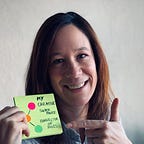Human-Centric Layoffs?
I was thinking through an article about human-centric layoffs, but got stuck…
So, I decided to launch a LinkedIn Poll to get insights from the community. Thanks to all of you who participated and commented — I consider this article as co-created with you!
These were the answers to my question on whether people think human-centric layoffs are possible:
As you can see, most people felt they are indeed possible. As a human-centered designer that was my first reaction as well. We can pretty much enhance any experience through human-centered design.
A layoff is what we call in Employee Experience lingo a “moment that matters”. Research by Heath & Heath (2017) identified three types of these defining moments: transitions, milestones, and pits (moments of hardship, pain, or anxiety).
So, we should absolutely re-design “the how” of layoffs.
But it’s more complex than that. Here are some of the comments to the poll that reveal it’s not as straight forward as it might look at first glance:
- “To me it’s mixed — I think when it comes to Design as “series of choices,” the choice or decision to do a reduction in force is always going to be a business-centered one. At the same time, I think the subsequent decisions for the “how” companies conduct themselves can absolutely be more or less human-centric.” — Casey Ashenhurst
- “When we look at it as a larger lifecycle, companies hire more than they need to, and pay more than market when the need is higher. And when the job is done, and times get hard, they let people go. But that’s at the core of consumerism (for organizations). That might be a larger fix. The immediate one might be “how we let people go”. — Stuti Dhandhania
- “My question would be…why are we always looking to the humans first? What other business decisions could be made to cut other places first? People are the foundation of every business.” — Angela Fischer
We might use human-centered design to re-imagine the layoff experience, but we need to also acknowledge that there are other factors at play.
Layoffs are a good example of how design thinking in the context of Human Resources often needs to be combined with systems thinking. Senge (1990) defines Systems Thinking as a way of thinking about, and a language for describing and understanding, the forces and interrelationships that shape the behavior of systems.
In the current environment with so many being impacted by layoffs, we want to focus on the how, but longer term it behooves us to examine “the what” and “the why” of the ecosystem.
A few thought starters:
- How might we re-imagine the way we lay off people? In the comments to my LinkedIn poll, Gabrielle Sternman Berger highlights the importance of applying “human centered” principles like empathy, dignity, and compassion. Masha Alexander and Rachel Clark pondered how we might apply the principle of co-creation to layoffs. I am sensing an HR.Hackathon on the topic. Leave a comment if this is something you might be interested in attending.
- What practices from laying off people during the pandemic should we keep/not keep/enhance?
- How might we ensure that layoffs don’t disproportionally impact historically marginalized communities?
- How might we better identify and mitigate root causes of layoffs?
- How might we shift the focus from the individual to the system? The former assumes the inevitable nature of layoffs and prompts us to share more or less helpful tips for how to cope. This distracts us from not doing the work to rethink the practice of layoff itself.
- What is the bigger system surrounding layoffs? If a company’s purpose is to maximize profits, then layoffs will always be the default solution as payroll tends to be an organization’s biggest cost factor…
What other questions should we explore?
We also need to identify all stakeholder groups that are directly (and indirectly) impacted by layoffs and re-imagine the experience for each. The three that come to my mind immediately are:
- The person getting laid off
- Their manager
- Their colleagues
My story: I have not experienced being laid off (yet), but I have felt tremendous grief when my cherished co-worker, just shy of his retirement, was walked out by a security guard, carrying his personal belongings in a cardboard box. Or, when I was not able as a leader to communicate transparently and compassionately with my team members about layoffs because we were instructed to wait for the public announcement at the next earnings call.
For Your Reflection: What are your layoff stories? How have these experiences impacted your relationship with the organization? What have you learned from the experience? How might you channel your learning into re-imagining the practice of layoffs?
Note: This article was originally published as part of the Design Thinking for HR LinkedIn Newsletter.
ABOUT THE AUTHOR
Design Thinking for HR is a biweekly LinkedIn newsletter that aims to inspire HR professionals to experiment with the human-centered design framework. The newsletter is curated by Nicole Dessain who is the Chief Employee Experience Designer at talent.imperative, Founder of the HR.Hackathon Alliance, and a Northwestern University instructor. Nicole is currently writing her first book about Design Thinking for HR. Join the Early Readers’ Community here.
